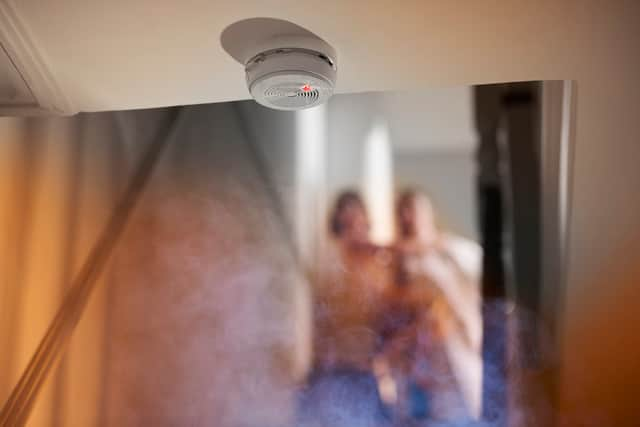Make a home fire plan to prevent potential tragedy


It’s everyone’s worst nightmare – a fire ravaging their home, destroying belongings or, even worse, killing or seriously injuring a loved one inside.
The sad fact is that every year in the UK, hundreds of people die or are seriously injured after a fire breaks out in their home. Yet, despite fire plans being compulsory in the workplace, fire safety experts estimate that over 90% of families fail to put one in place in their own homes.
Advertisement
Hide AdAdvertisement
Hide AdHouse fires are terrifying, deadly and can spread incredibly quickly. It can take less than 30 seconds for a small flame to become a major fire and only a matter of minutes for a house to fill with poisonous black smoke.
Harry Woodage of Allsaved, who works with numerous companies and residential customers across the UK helping to address their fire safety requirements, shares his advice for putting in place a fire safety plan for the home.
Everyone can keep themselves safe by following the five Ps – Prepare, Plan, Prevent, Practice andProtect …
Prepare – fit smoke alarms
You’re two times more likely to die in a fire at home if you don’t have a working smoke alarm. Installing one is a great start, but you also need to make sure you check and test it monthly.
Advertisement
Hide AdAdvertisement
Hide AdYou should have at least one smoke alarm fitted on every level of your home. If possible, invest in a sealed battery smoke alarm – it will last around ten years and will be more cost effective in the long run than constantly having to replace batteries.
Plan – have an escape route
Plan the most practical escape route by walking through your home and identifying the best possible ways to exit the property. Ideally you should visit each room to work out where the exits are and what your route out would be. Consider creating an escape grid by drawing a floorplan of your home that includes windows and doors and then plotting all possible routes. Wherever possible you should always choose the safest route out.
Make sure you agree on a meeting point outside the property, which should be in front of your home. Keep keys for windows and doors nearby so you can access them easily and get out quickly. Make sure your escape routes stay clear and clutter free.
Prevent – create a bedtime routine
Fire is at its most dangerous when you’re asleep because you’re less likely to know it’s happening. So it’s a good idea to do everything you can to prevent a fire from breaking out in the first place by checking the house each evening before you head to bed.
Advertisement
Hide AdAdvertisement
Hide AdUnless it’s designed to stay on, like a fridge or freezer, make sure any electrical appliances are switched off and unplugged including heaters. Check the cooker and hob are not on and that any candles are put out and any open fireplaces that might have been burning are protected with a sturdy fire guard. Avoid using washing machines or tumble dryers overnight.
Smokers need to be especially cautious. Double check that cigarettes and cigars are always properly extinguished.
Finally, close all internal doors – it will help to prevent fire from spreading.
Practice – every second counts
It’s no good preparing and putting a plan in place if you don’t practice it. Every second counts when it comes to escaping a fire so the whole household should be fully aware of what to do if a fire breaks out.
Advertisement
Hide AdAdvertisement
Hide AdIf children or those with disabilities or limited mobility live with you, make sure you take the time to ensure they understand what to do and who in the household will be responsible for helping them in an emergency.
Try to practice your fire plan every month to keep it fresh and to allow for any changes that might need to be made.
Protect – if the worst happens
If a fire does break out in your home, and you are unable to escape, make sure you know how to protect yourself until help arrives.
Ideally you should try to get everyone into one room that has a window and a phone. Block the bottom of the door with bedding or towels to keep smoke out and call the emergency services.
Advertisement
Hide AdAdvertisement
Hide AdIf you have no choice and have to exit via a window before emergency services arrive, don’t jump. Instead, gradually lower yourself down before dropping. Throw out bedding or sofa cushions first to break your fall.
If you are in a high level building or apartment block, slightly different rules will apply and you should make yourself familiar with the property’s fire plan and available exits. In the event of fire, you should avoid using lifts and balconies.